How to Build an At-Home MS Recovery Corner (with Cold Plunge Setup)
🌿 Why You Need a Recovery Corner with MS
Multiple Sclerosis (MS) isn’t just a disease—it’s a daily negotiation between energy, symptoms, and self-care. Whether you're managing fatigue, heat sensitivity, pain, or flare-ups, having a dedicated recovery corner at home can make a huge difference in how quickly you bounce back.
This isn’t about building a spa. It’s about creating a sanctuary—a low-stress space where you can cool down, reset your nervous system, soothe your muscles, and regulate your emotions.
And yes, one of the most powerful tools you can include? Cold therapy. Specifically, a home cold plunge setup.
Want a cold plunge? Click here.
🧊 The Role of Cold Plunges in MS Recovery

Cold plunges are gaining popularity in the MS community—and for good reason. Cold exposure has been shown to:
- Decrease inflammation
- Support temperature regulation
- Improve mood by increasing norepinephrine and dopamine
- Calm the nervous system
- Reduce post-exertional fatigue
- Help manage MS heat intolerance (Uhthoff’s phenomenon)
- Improve sleep and resilience over time
For many people with MS, heat is the enemy. Cold water immersion gives your body a break and may even shorten the duration of flare-ups.
🛠️ Step 1: Choose the Right Space for Your Recovery Corner
You don’t need a full room. Even a small nook can work if it’s quiet, clean, and yours. Ideal locations include:
- A bathroom with a tub (for contrast therapy)
- A basement or garage (for larger cold plunge tubs)
- A patio or balcony with shade
- A spare bedroom with blackout curtains
Look for a spot with access to:
- A power outlet (for cooling or ice machines)
- Water drainage or easy clean-up
- Privacy and calmness
- Room for you to lie down, stretch, or sit upright comfortably
🧊 Step 2: Set Up Your Cold Plunge (Even on a Budget)
Here are several options based on your budget and space:
💧 Budget Option: DIY Ice Bath in the Tub
Fill your bathtub with cold water and 1–2 bags of ice
Add a thermometer to ensure the water stays around 50–59°F (10–15°C)
Sit for 2–5 minutes to start
Use a timer and warming towel for safety
Pros: Very affordable, easy to try
Cons: Short duration, less control over temp
🛁 Mid-Range Option: Inflatable Cold Plunge Tub
Use products like the The Cold Pod or Plunge Pop
Add ice manually or use cold hose water
Can be used indoors or outdoors
Pros: Better insulation, portable, more immersive
Cons: Ice needs to be replenished
❄️ High-End Option: Plug-in Cold Plunge with Chiller
Look for brands like The Plunge, Renu Therapy, or BlueCube
Built-in chillers maintain temperature automatically
Some include filtration systems, ozone sanitization, and digital controls
Pros: Best performance, hassle-free cooling
Cons: Expensive, requires installation space and maintenance
🪑 Step 3: Add Comfort and Functionality
Your cold plunge is just one part of your MS recovery corner. You’ll want the rest of the space to feel calming, functional, and safe.
Essentials to Include:
Supportive mat or yoga mat for stretching
Recliner, zero-gravity chair, or bean bag for resting afterward
Towels, robes, and slippers for warmth post-plunge
Fans, cooling towels, or neck wraps for additional cooling
Storage basket for gear like water bottles, supplements, timers
🧘 Step 4: Make Room for Movement and Recovery Rituals
MS recovery isn’t only about cooling—it’s about calming and rebalancing your whole system.
In your recovery corner, leave space to:
✅ Stretch or Foam Roll
Loosen tight muscles
Improve blood flow
Reduce spasticity
✅ Do Breathwork or Meditation
Activate your parasympathetic nervous system
Reduce anxiety and pain perception
Practice “box breathing” or vagus nerve stimulation
✅ Use Recovery Tools
Massage guns for muscle knots
Compression boots for circulation
Infrared heating pads for gentle warmth (for non-heat-sensitive days)
🕯️ Step 5: Add Sensory Calming Elements

You want this corner to feel like a reset. That means calming colors, textures, and scents that soothe your overactive nervous system.
Try including:
- Soft lighting (salt lamp, fairy lights, or a dimmable lamp)
- Noise machine (white noise or nature sounds)
- Essential oil diffuser with calming scents (lavender, eucalyptus, or peppermint)
- Weighted blanket to enhance nervous system relaxation post-plunge
This is where the mind-body connection begins to restore itself.
📅 Step 6: Create a Gentle Routine
Even just 5–10 minutes a day in your recovery corner can help you feel more grounded and supported.
Here’s a simple MS-friendly routine:
Morning Reset (10–15 mins):
Cold plunge (2–3 minutes)
5 deep breaths or gratitude practice
Stretch neck, shoulders, and hips
Hydrate with electrolytes
Afternoon Reset (10–20 mins):
Recline with cooling towel and fan
Try guided breathwork or listen to calming music
Foam roll lower back or legs
Take supplements that support recovery
Evening Wind-Down (15–30 mins):
Cold bath or brief plunge (1–2 minutes if heat flares up)
Gentle stretching or light yoga
Essential oils and weighted blanket
Read, meditate, or journal
💡 Bonus Tips: Cold Plunge Safety for People with MS
While cold therapy is promising, it’s not one-size-fits-all. Keep these tips in mind:
Always start slow. Begin with 30–60 seconds and gradually increase.
Monitor how you feel. If you feel dizzy, overly fatigued, or shivering uncontrollably, stop.
Avoid cold plunges during relapses or if you're immunocompromised.
Pair cold therapy with warmth after—robe, warm tea, dry clothing.
Hydrate well—cold water can increase urination and fluid loss.
Check with your doctor before starting cold exposure, especially if you have heart or blood pressure issues.
🧠 The Mental and Emotional Benefits

MS recovery isn’t just physical—it’s deeply emotional. Cold plunges and recovery rituals can also:
- Provide a sense of control and routine
- Teach resilience through discomfort
- Help reduce anxiety and depression by modulating brain chemistry
- Create dopamine release, which is often low in MS-related fatigue
- Build emotional strength, one chill minute at a time
Your recovery corner becomes a daily act of empowerment, not punishment.
🌟 Real-Life Testimonials
Many people with MS have reported surprising benefits:
“My cold plunge keeps me functioning on hot days. I can feel the heat symptoms stop within minutes.”
“It’s more than a plunge—it’s my moment of mental reset. I feel calmer, stronger, and less fatigued.”
“After my cold soak, my legs work better. It’s like giving my nervous system a break.”
While not everyone responds the same way, those who benefit often swear by their at-home setup.
🧊 What If You Can’t Do a Full Cold Plunge?
No problem. Recovery still works without submerging your body. Try:
Cold foot soaks
Cooling vests
Chilled neck wraps or face towels
Cool showers (1–2 minutes)
Wim Hof-style breathing and exposure to outdoor cold air
Contrast showers (hot/cold alternating 30 seconds each)
🔁 Make It a Long-Term Practice
A recovery corner isn't a luxury—it's a strategy.
Over time, this space becomes your go-to ritual for flare recovery, your prevention zone, and your mind-body healing sanctuary.
Think of it as your anti-burnout toolbox.
When life with MS becomes overwhelming, you’ll know exactly where to go.
✅ Final Thoughts
You don’t need a spa membership or a retreat center to start healing. You need:
- A quiet space
- Cooling tools
- Recovery rituals
- And the intention to treat your body like it matters
By building your at-home MS recovery corner—with a cold plunge as its centerpiece—you’re giving yourself the tools to regulate, recover, and restore every single day.
Want a cold plunge? Click here.
📚 References
Miller, D. H., et al. (2005). "Clinically isolated syndromes suggestive of multiple sclerosis, part I." The Lancet Neurology.
Rymaszewska, J., et al. (2021). “Cold exposure in humans: A systematic review.” Journal of Thermal Biology.
Hurst, K., et al. (2020). "Autonomic nervous system regulation and MS fatigue." Multiple Sclerosis Journal.
Hof, W. (2017). The Wim Hof Method.
White, L. J., & Castellano, V. (2008). "Exercise and brain health—implications for multiple sclerosis." Part of Current Neurology and Neuroscience Reports.
Related Posts
-

Learning to Feel Safe in Your Body Again
If your body no longer feels like a safe place—due to trauma, chronic illness, or anxiety—you’re not alone. This guide offers gentle, body-based strategies to help you reconnect with yourself, regulate your nervous system, and rebuild trust in your physical experience.
-

When You Feel Emotionally Unlovable: Challenging the Lie
Feeling unlovable because of your emotions, illness, or sensitivity? You’re not broken—you’re healing. Learn how to challenge the lie of emotional unworthiness and rebuild self-trust, one compassionate step at a time.
-
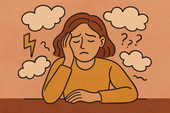
Brain Fog and Fatigue: How to Stop Blaming Yourself
Struggling with brain fog or chronic fatigue? You’re not lazy or failing. Learn how to stop blaming yourself for symptoms caused by MS or chronic illness, and start embracing a more compassionate path to healing and self-understanding.
-

Creating an Emotional Support Team You Actually Trust
Tired of feeling unsupported or misunderstood? Learn how to build an emotional support team you actually trust—with people who see you, hold space for you, and respect your boundaries, especially when living with MS or chronic illness.
-

MS, Vulnerability, and the Fear of Being Seen
Living with MS can make vulnerability feel unsafe. Learn why so many people with MS hide their struggles—and how to gently move toward authenticity, self-acceptance, and deeper connection without shame.
-
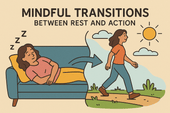
Mindful Transitions Between Rest and Action
Struggling to shift between rest and activity without guilt or overwhelm? This guide offers gentle, mindful strategies to make transitions feel more natural, intentional, and supportive of your nervous system.
-
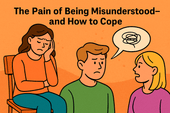
The Pain of Being Misunderstood—And How to Cope
Feeling the sting of being misunderstood? Learn why it hurts so deeply and discover practical, healing strategies to protect your truth, communicate clearly, and rebuild emotional safety when others just don’t get it.
-
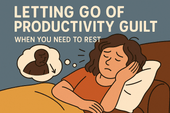
Letting Go of Productivity Guilt When You Need to Rest
Struggling with guilt every time you try to rest? Learn how to release productivity shame, understand why rest matters, and embrace a more compassionate rhythm for healing and recovery—without feeling lazy.
-

Rebuilding Energy Reserves Without Shame
-

What to Do If You Feel Emotionally Invalidated by Doctors
Feeling emotionally invalidated by your doctor can be deeply distressing. Learn how to recognize medical gaslighting, validate your own experience, and advocate for better care when you’re not being heard.
-

How to Rest Without Feeling Lazy
Rest isn’t laziness—it’s a necessary act of self-respect. Learn how to shift your mindset, let go of guilt, and embrace rest as a vital part of mental and physical well-being.
-
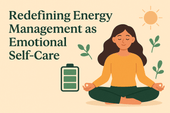
Redefining Energy Management as Emotional Self-Care
Energy isn’t just physical—it’s emotional. Learn how redefining energy management as emotional self-care can help you protect your peace, support your nervous system, and live more in tune with your true needs.
-
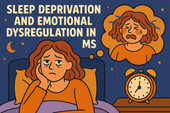
Sleep Deprivation and Emotional Dysregulation in MS
-

How to Cope When Friends Disappear After Diagnosis
Losing friends after a diagnosis can feel like another kind of grief. Discover why some friends disappear—and how to cope with the emotional fallout while building more supportive relationships.
-

How to Talk to Your Kids About MS Without Overwhelming Them
Struggling with how to explain MS to your kids? Learn how to talk to children of all ages about multiple sclerosis with honesty, clarity, and emotional safety—without overwhelming them.
-
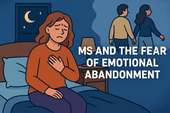
MS and the Fear of Emotional Abandonment
The fear of emotional abandonment is common for people with MS. This article explores why it happens, how it impacts your relationships, and how to create emotional safety and healing.
-
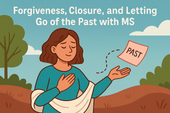
Forgiveness, Closure, and Letting Go of the Past with MS
Living with MS often brings emotional wounds from the past. Learn how forgiveness, closure, and letting go can help you heal emotionally—and reclaim peace in the present.
-
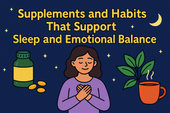
Supplements and Habits That Support Sleep and Emotional Balance
Struggling with poor sleep and emotional ups and downs? Discover calming supplements and daily habits that support deep rest and mental well-being—backed by science and easy to implement.
-

When Insomnia Feels Like Your MS Brain Won’t Turn Off
Struggling to sleep with MS? When your brain won’t shut off at night, insomnia feels relentless. Learn what causes it—and discover science-backed strategies to calm your mind and finally rest.
-

The Emotional Toll of Waking Up Tired Every Day: Why It Hurts More Than You Think
Waking up tired every day takes a deep emotional toll—from mood swings to lost motivation and self-doubt. Learn why chronic fatigue hurts more than you think and how to gently reclaim your mornings.
-
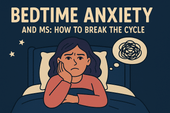
Bedtime Anxiety and MS: How to Break the Cycle
Bedtime anxiety is a common struggle for people with MS—and it’s more than just racing thoughts. Learn how MS-related stress, nervous system dysregulation, and fear of symptoms can create a cycle of sleeplessness, and discover practical, calming strategies to finally reclaim restful nights.
-

How Mental Health Affects Sleep Quality in MS: Breaking the Cycle of Fatigue and Emotional Distress
Struggling to sleep when you have MS? Discover how anxiety, depression, and neurological changes impact your rest—and what you can do to reclaim it. From CBT-I and calming supplements to lifestyle tips that support both mental health and sleep, this guide offers practical strategies for better nights.
-

Learning to Love Your Life (Even When It’s Not What You Expected)
Your life may not look how you imagined—but it’s still worth loving. Learn how to find peace, purpose, and joy in the unexpected.
-

Tips for Managing Depressive Thoughts Without Judgment
Learn how to meet depressive thoughts with compassion, not shame. These gentle, research-backed tools help you manage low moods without self-judgment.
-
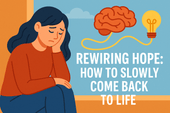
Rewiring Hope: How to Slowly Come Back to Life
Feeling emotionally numb or disconnected? Learn how to gently rebuild hope, one small sensory step and spark of life at a time.
-

Depression and Suicidality in MS: A Conversation That Needs to Happen
Depression and suicidality in MS are real—and urgent. Learn why we must talk about it, how to spot warning signs, and where to find help and hope.
-

Finding Meaning When Life Feels Empty
Feeling disconnected or numb? Discover gentle ways to find meaning again—even in emptiness—through daily rituals, reflection, and purpose.
-
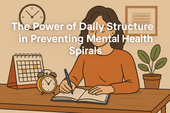
The Power of Daily Structure in Preventing Mental Health Spirals
Daily structure can prevent mental health spirals by creating safety, routine, and self-trust—especially for those with MS, depression, or anxiety.
-

Healing from Emotional Flatness with Sensory Rituals
Feeling emotionally numb or disconnected? Discover how sensory rituals can gently restore pleasure, presence, and emotional resilience.
-

The Role of Light Therapy for Seasonal Depression and MS
Can light therapy ease seasonal depression in people with MS? Discover the science, benefits, and how to use it safely for better mood and energy.
-
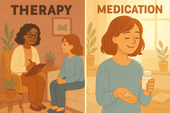
Medication vs Therapy: Treating MS-Related Depression Effectively
Explore whether therapy, medication, or both are best for treating MS-related depression. Understand what works, when—and why combination care is often ideal.
-

How to Support a Partner with MS and Depression
Learn how to support a partner living with MS and depression—practical tips, emotional tools, and ways to protect your own mental health too.
-

The Emotional Cost of Losing Your Old Life
Losing your old life to MS isn’t just about physical symptoms—it’s about grieving the identity, dreams, and freedom you once had. This article explores the emotional toll of invisible grief and how to begin healing without denying the pain.
-

MS, Depression, and Hormones: What You Should Know
MS-related depression isn’t always just emotional—it can be hormonal. Discover how thyroid, sex, and stress hormones influence mood in MS, why women may feel worse during PMS or menopause, and what signs to look for when hormones may be driving emotional instability.
-

MS and Anhedonia: Reclaiming Pleasure One Step at a Time
Anhedonia—feeling emotionally flat or disconnected—is a common but misunderstood symptom of MS depression. This article explores how neuroinflammation, dopamine disruption, and fatigue can dull your sense of joy—and how small, gentle steps can help you begin to feel again.
-
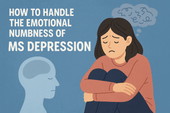
How to Handle the Emotional Numbness of MS Depression
Emotional numbness in MS depression doesn’t always look like sadness—it can feel like nothing at all. Learn why this disconnection happens, how it's tied to neuroinflammation and nervous system overload, and discover science-backed strategies to gently reconnect with your emotions.
-

How Inflammation Can Affect Mood in MS
Mood swings and emotional numbness in MS aren’t just psychological—they can be driven by immune system inflammation. This article explores how inflammatory cytokines affect the brain, why mood changes are often biological, and what you can do to calm your nervous system from the inside out.
-
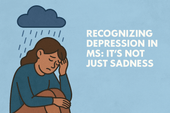
Recognizing Depression in MS: It's Not Just Sadness
Depression in multiple sclerosis (MS) is more than just sadness—it can be a neurological symptom, a side effect of inflammation, or a silent weight that masks itself as fatigue or emotional numbness. This article helps you recognize the hidden signs of MS-related depression, understand the science behind it, and explore real treatment options that support both mental and physical health.
-

Is Cryotherapy Safe for MS? Pros, Cons, and How It Compares to Cold Plunges
Cryotherapy promises quick recovery, inflammation reduction, and mood support—but is it safe for people with MS? This article breaks down the science, risks, and real-life benefits of cryotherapy for multiple sclerosis. You’ll also learn how it compares to cold plunges and which option may be better for calming flares and regulating your nervous system.
-

Can Cold Plunges Help Reduce Inflammatory Flares in MS?
Flares in multiple sclerosis (MS) are often driven by inflammation—but what if cold water could help turn down the heat? This in-depth article explores how cold plunges may help reduce flare frequency and intensity in MS by calming the immune system, lowering pro-inflammatory cytokines, and regulating the nervous system. Learn how to safely use cold exposure as part of your MS recovery routine.
-
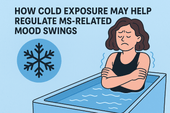
How Cold Exposure May Help Regulate MS-Related Mood Swings
Mood swings are a common but overlooked challenge in multiple sclerosis (MS). This article explores how cold exposure—like cold plunges and showers—may help regulate emotional ups and downs by calming the nervous system, reducing inflammation, and boosting mood-enhancing chemicals. Learn how to use this natural tool safely to support your mental and emotional resilience with MS.
-
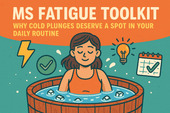
MS Fatigue Toolkit: Why Cold Plunges Deserve a Spot in Your Daily Routine
Fatigue is one of the most debilitating symptoms of multiple sclerosis (MS)—often invisible, misunderstood, and overwhelming. While no single tool can eliminate it, building a personalized fatigue management toolkit can make life more manageable. One surprising contender? Cold plunges. In this article, we explore why cold water immersion might be the refresh button your nervous system needs—and how to safely make it part of your MS fatigue routine.
-
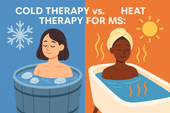
Cold Therapy vs. Heat Therapy for MS: Which One Helps More?
Managing multiple sclerosis (MS) often means navigating symptoms like fatigue, spasticity, pain, and nerve dysfunction. But when it comes to using temperature-based therapies, there’s a question many patients face: Should I be using cold or heat? In this in-depth guide, we explore the benefits, risks, and best use cases of cold therapy vs. heat therapy for MS.
-
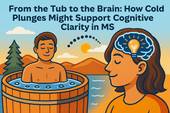
From the Tub to the Brain: How Cold Plunges Might Support Cognitive Clarity in MS
Cognitive fog is one of the most frustrating symptoms of multiple sclerosis (MS). But could cold plunges—those bracing dips into icy water—offer a surprising path to mental clarity? This article explores the emerging science behind cold exposure, brain function, and how a cold tub might help people with MS sharpen focus, lift brain fog, and reset their nervous system.
-
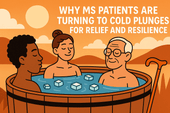
Why MS Patients Are Turning to Cold Plunges for Relief and Resilience
Cold plunges are no longer just for elite athletes and wellness influencers. A growing number of people with multiple sclerosis (MS) are turning to cold water immersion to ease symptoms, build nervous system resilience, and find calm in the chaos of chronic illness. This article explores why—and how—you might want to give it a try.
-
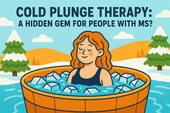
Cold Plunge Therapy: A Hidden Gem for People with MS?
Cold plunge therapy—once the domain of elite athletes and biohackers—is gaining attention among people with multiple sclerosis (MS). Could it help reduce inflammation, calm the nervous system, and ease MS symptoms like fatigue and spasticity? In this article, we dive deep into the science, benefits, safety, and practical application of cold plunges for MS recovery and symptom relief.
-
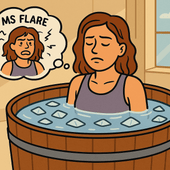
Finding Relief in the Midst of a Flare
MS flares can leave you feeling overwhelmed, exhausted, and mentally foggy. Cold water therapy is emerging as a promising tool to help reset the body and mind after a flare. This article explores how cold exposure supports recovery, calms the nervous system, and can be safely added to your daily routine.
-
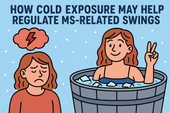
How Cold Exposure May Help Regulate MS-Related Mood Swings
Mood swings in multiple sclerosis (MS) can feel like emotional whiplash—one moment calm, the next overwhelmed, angry, or hopeless. While medications and therapy help, many people with MS are exploring natural strategies to support emotional balance. One surprising tool gaining attention? Cold exposure. In this article, we explore how cold plunges and other forms of cold therapy may regulate the nervous system, stabilize mood, and offer emotional relief for people with MS.
-
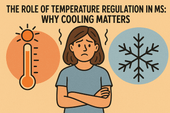
The Role of Temperature Regulation in MS: Why Cooling Matters

















































